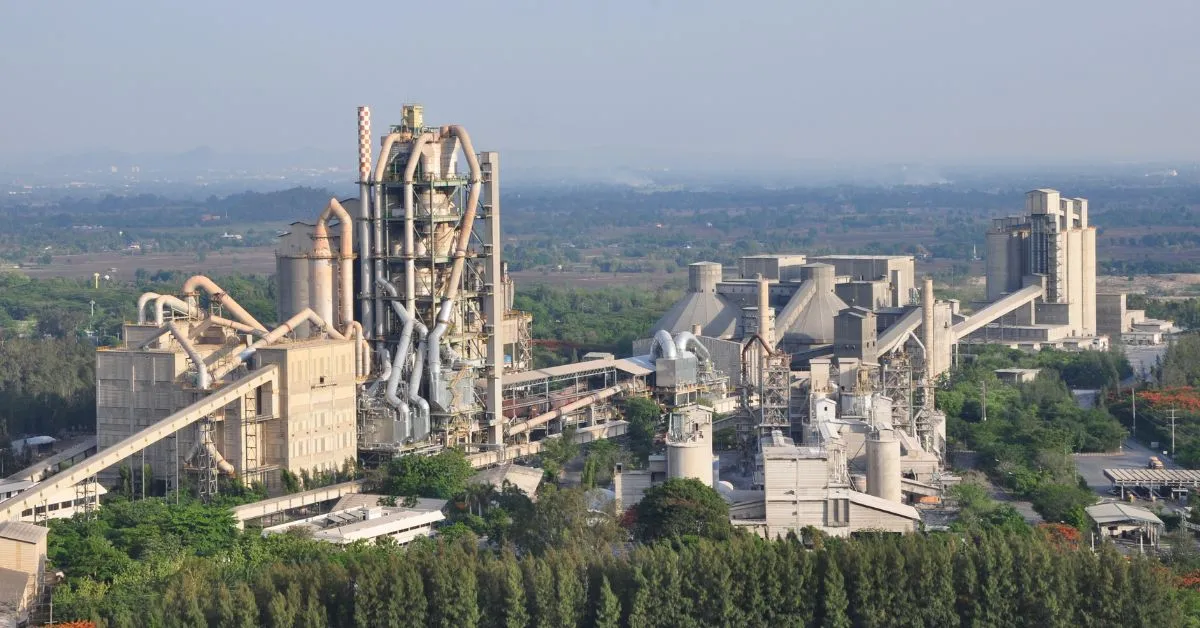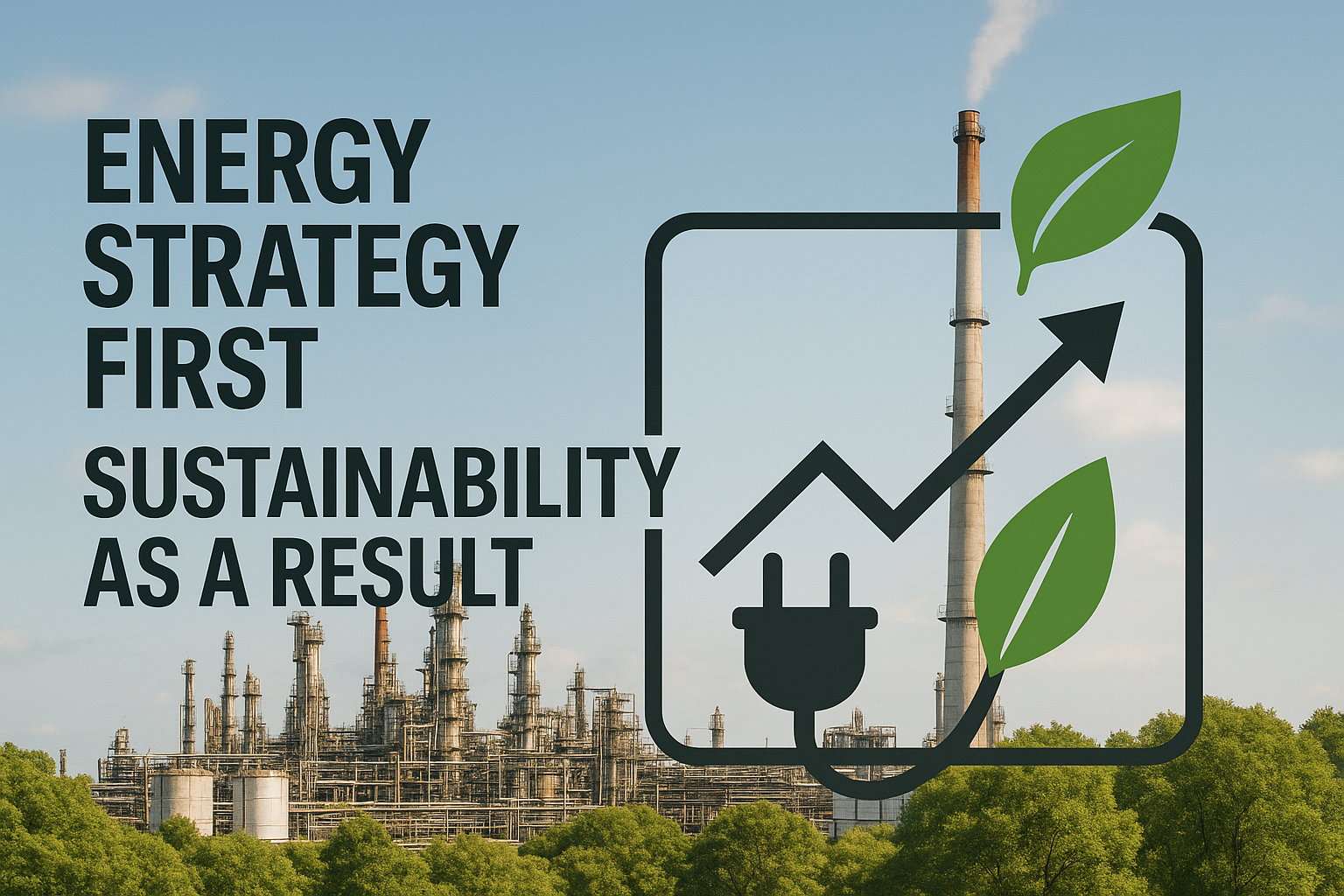Cement production is one of the world’s most energy-hungry industries. Every megawatt-hour you burn translates directly into fuel bills, so even small efficiency gains quickly feed your bottom line. Carbon-pricing schemes and stakeholder sustainability goals are forcing plants to squeeze more output from each gigajoule without compromising clinker quality.
The challenge grows as retiring experts take decades of operational knowledge with them, while fragmented data hides waste until monthly reports arrive, long after corrective action would have mattered.
Industrial AI techniques now turn live sensor streams into continuous guidance, trimming heat and power in real time while keeping process constraints intact. Three proven strategies can help you optimize energy consumption: make usage visible instantly, connect process conditions to performance, and use AI to automate the most energy-intensive setpoints.
Current Outlook on Cement Production
Modern cement manufacturing still revolves around two energy-hungry steps: firing kilns at high temperatures and grinding raw meal and clinker. Even in advanced dry-process plants, grinding circuits consume up to 60% of electrical power per tonne of cement, with thermal demand adding equally heavy fuel costs that appear immediately in monthly bills.
Margins are tightening as fuel prices rise and carbon charges gain traction worldwide. The shift toward natural gas and alternative fuels adds volatility to flame characteristics, complicating stable, efficient combustion. Meanwhile, veteran operators are retiring, taking decades of tacit know-how with them and widening the knowledge gap on energy-lean operations.
Most plants respond by running conservative setpoints, extra draft, higher kiln heat, and finer grind to safeguard quality. That caution quietly burns cash while data silos and lab results that arrive hours or days late delay corrective action and mask hidden inefficiencies.
Meeting 2030 decarbonization targets while staying competitive now depends on real-time visibility and AI-driven optimization that can restore expert-level decisions around the clock, tighten margins safely, and turn energy from a cost center into a lever for profit.
Strategies for Energy-Efficient Cement Production
Energy optimization is no longer optional in cement production. With fuel and electricity costs taking up a large portion of production expenses, plants need practical approaches that deliver immediate savings without compromising quality. The strategies below focus on turning invisible waste into visible opportunity, connecting process variables to energy outcomes, and automating high-impact decisions.
Together, these approaches form a powerful framework that helps operations teams reduce consumption while maintaining stable production, even as experienced operators retire and fuel prices fluctuate.
1. Make Energy Use Visible in Real Time
Energy data in many cement plants is scattered across lab servers, distributed control system (DCS) archives, and spreadsheet reports that often arrive days late. By the time an energy spike shows up in a monthly summary, the kiln may have already burned thousands of extra gigajoules.
Real-time visibility closes that gap, giving you live feedback on how every fan, burner, and mill affects specific energy use (kW/t) across raw grinding, pyroprocessing, and finish grinding.
Operators equipped with live KPIs also act faster, with some plants reporting downtime reductions after introducing plant-wide dashboards linked to anomaly alerts. Implementing effective real-time monitoring requires several key steps:
- Network existing meters and smart sensors to a single historian
- Build role-based dashboards that stream fuel, power, and steam consumption in real time
- Add anomaly alerts when rolling kWh values exceed baseline thresholds
- Normalize every tag to production metrics so shifts can compare performance fairly
- Provide browser and control-room access so operators, engineers, and managers see the same numbers
This approach delivers immediate benefits by detecting anomalies within hours instead of weeks. Pattern recognition reveals optimal operating windows, while before-and-after comparisons verify savings instantly. The shared visibility aligns maintenance, operations, and management on KPIs, and enables scheduling mills and auxiliaries around tariff curves to lower total costs.
2. Link Process Conditions to Energy Performance
Power and fuel consumption in cement manufacturing rise or fall with day-to-day process stability. Thermal demand peaks when the kiln overburns clinker, and fan motors draw more electricity whenever false air leaks inflate gas volumes. Studies compiled in the IFC guide show that grinding alone accounts for a significant portion of a plant’s electricity consumption; the rest is tied directly to how well heat and mass flow through the preheater, calciner, kiln, and cooler.
Several operating variables stand out as critical efficiency drivers:
- High preheater cyclone efficiency and low pressure drop keep draft requirements—and fan kilowatts—manageable
- Tight seals curb false air that would otherwise force extra fuel into the kiln
- Combustion tuning with a compact, stable flame and minimum safe excess oxygen caps stack losses and prevents overburning
- Efficient clinker cooling lifts secondary-air temperatures, reducing fuel demand
- Proper mill loading paired with sharp classification trims kilowatt-hours per metric tonne of cement
Data correlations make these links actionable. Multivariate models map how shifts in cyclone differential pressure, oxygen levels, or separator speed translate into gigajoules and kilowatt-hours.
Heat maps help engineers spot hot zones, and alarm limits tied directly to KPIs warn operators before consumption spikes. The analysis filters out external noise, ambient temperature swings, and raw-meal variability, so teams gain objective setpoints rather than relying on legacy rules of thumb.
Plants that embed these correlations into routine decisions detect inefficiencies faster, adjust proactively, and document verified fuel and power savings, laying the groundwork for the closed-loop optimization that follows.
3. Automate Energy-Intensive Setpoints With AI
Manual tuning of kiln ID-fan speed, fuel flow, and air distribution leaves a gap between your ideal operating window and what human reflexes can achieve. Operators often add generous safety margins that push heat and electricity consumption higher than necessary, especially when fuel quality or raw-meal chemistry shifts.
Recent deployments of closed-loop AI optimization show how adaptive models can learn the nonlinear behavior of kiln systems, predict quality in real time, and write optimized setpoints directly to the distributed control system (DCS). Plants using this approach report up to 5–10 percent efficiency improvements while holding free-lime and strength targets steady.
Successful implementation begins by mining historical historian data to map relationships among draft, fuel rate, O₂/CO trends, and clinker quality. AI models trained on this data can forecast burning-zone stability and fan power minutes ahead.
The deployment process starts in advisory mode so control-room staff can compare AI recommendations with current practice before transitioning to closed loop on the highest-impact variables under hard bounds for emissions and temperature. Throughout this process, tracking KPIs such as specific heat, fan kWh per tonne, and CO spike frequency validates savings and helps recalibrate models.
This automated approach delivers tighter control bands that eliminate reaction lag and reduce overburning. Plants see lower fan power by trimming excess draft and false air, while the system automatically adapts to alternative fuels, sustaining efficiency despite variable calorific value. This reduces operator workload, allowing crews to focus on maintenance and process improvement instead of constant setpoint adjustments.
Achieve Sustainable Energy Efficiency in Your Cement Plant Today
Turning energy waste into a competitive advantage requires a strategic approach that starts with visibility, connects process variables to consumption, and ultimately automates optimization. Plants that implement this three-step methodology consistently achieve 5–10% efficiency improvements within a single quarter while maintaining quality targets—all without major capital investments.
The journey begins with a focused data audit that maps your historian tags to actual costs, identifies your highest-impact systems (typically kiln operations first), and builds momentum through a targeted pilot program that demonstrates clear value before scaling across your operation.
Imubit’s Closed Loop AI Optimization solution integrates seamlessly with your existing distributed control system (DCS) infrastructure, learning your plant-specific operations and continuously adjusting critical parameters in real time.
The system builds operator trust through transparent dashboards, requires no shutdowns for implementation, and adapts automatically as raw materials and fuel blends evolve.
Ready to capture these untapped savings and advance your sustainability goals? Schedule a complimentary Plant AIO Assessment to discover how quickly your cement facility can transform energy from a cost center into a strategic advantage.




